Today I am showing you how to make a simple shape pop-up book to help kids learn basic geometric shapes. This is a fun way to incorporate maker and math skills into a project kids will love to show off!
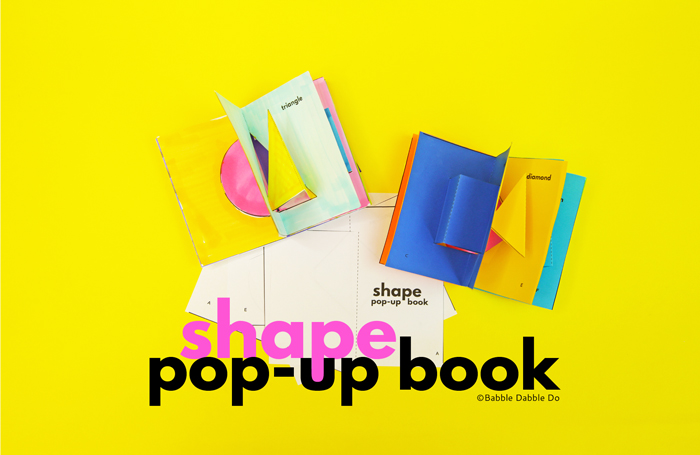
I have been helping my kids with their math homework a LOT lately. With distance learning in full swing I guess I have become the de facto math tutor around our house… I can honestly say right now that I have actually been enjoying it (even the algebra) but the one branch that I am always excited to help with is geometry.
I became and architect and industrial designer in part because of a love of working with geometry, including, shapes, space, and 3 dimensional objects. In today’s activity kids will learn the basic geometric shapes, their names, and the number of sides each shape has.
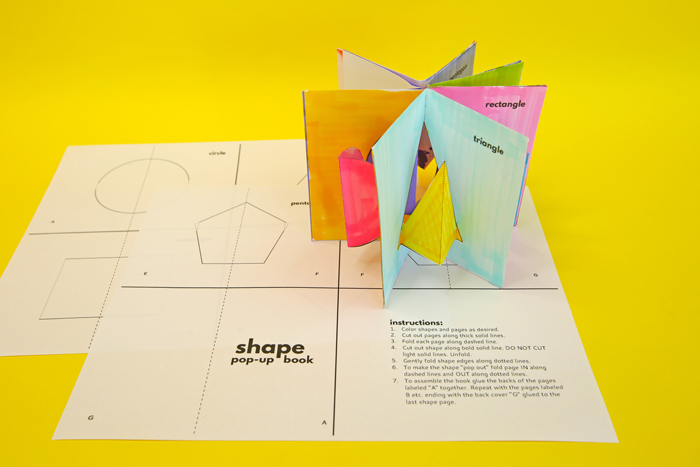
This project was created for HP’s Print & Learn Initiative in Summer 2020. You will be directed to HP’s website for the template download.
Materials
- Template
- Paper or cardstock
- Scissors
- Markers
- Glue Stick
Shape Pop-Up Book Instructions
Time needed: 20 minutes.
Make a simple pop-up book to learn the basic shapes.
- Color in the shapes
Color shapes and pages as desired. The first two shapes are colored for you! If you printed these on colored paper you may skip this step.
- Cut out pages
Cut out pages along thick solid lines.
- Fold pages and cut shapes
Fold each page along dashed line. Cut out shape along bold solid line. Do not cut light solid lines. Unfold.
- Make it “pop”
Gently fold shape edges along dotted lines. To make the shape “pop” fold the page IN along dashed lines and OUT along dotted lines.
- Assemble the book
To assemble the book glue the backs of the pages labeled “A” together. Repeat with the pages labeled B etc. ending with the back cover “G” glued to the last shape page.
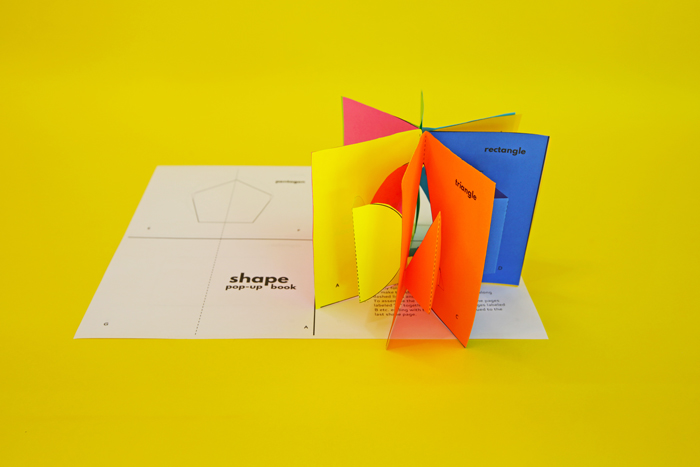
Let’s Talk STEAM
Art/Design
So much of the built world is based on basic geometry and there are some simple reasons for it:
First, simple shapes are very efficient. You can contain space in a simple shape and reduce the amount of building materials you need by keeping the permitter as simple as possible. Tipis and A-Frames are great example of man made shelter that minimizes the amount of materials needed to create a protected interior space.
Second, many modern building materials themselves are often manufactured as linear pieces: think wood lumber and steel beams/columns and decking, even bricks. When building with materials that are linear, it’s more cost efficient to create designs that the materials can easily be constructed with. It’s much harder to make a rounded shape out of straight building materials than it is to make rectangular shape. In fact modernism embraced this idea of using simple materials in an efficient, honest and geometric way.
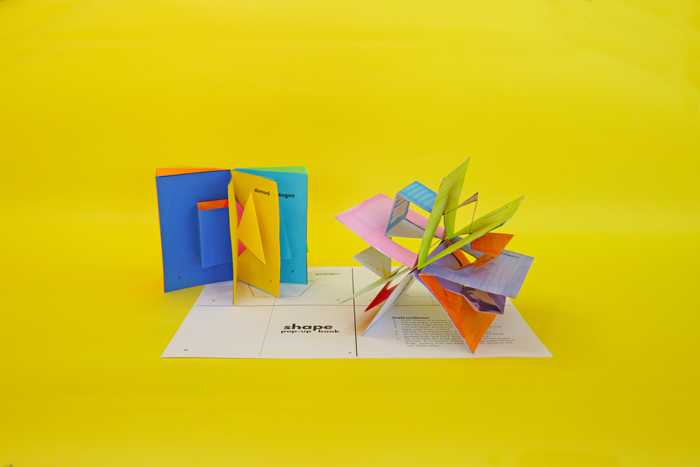
Math
Geometry is the branch of math that studies points, angles, lines, shapes, and solids. As we make this pop-up book kids will have chance to explore some of the basic shapes: Circle, Triangle, Rectangle/Square, Diamond, Pentagon, and Hexagon, and how many sides each shape has.
Almost all shapes have vertices. A vertex is the point at which two or more lines meet. Think of it as a corner point. Vertices (the plural of vertex) exist in 2 dimensional and 3 dimensional shapes.
Circles incidentally have no sides. They are a continuous loop but without vertices they are considered to have no sides at all.
An axis is a straight line around which a body or geometric figures rotate. The center line of each page in this project is an axis.
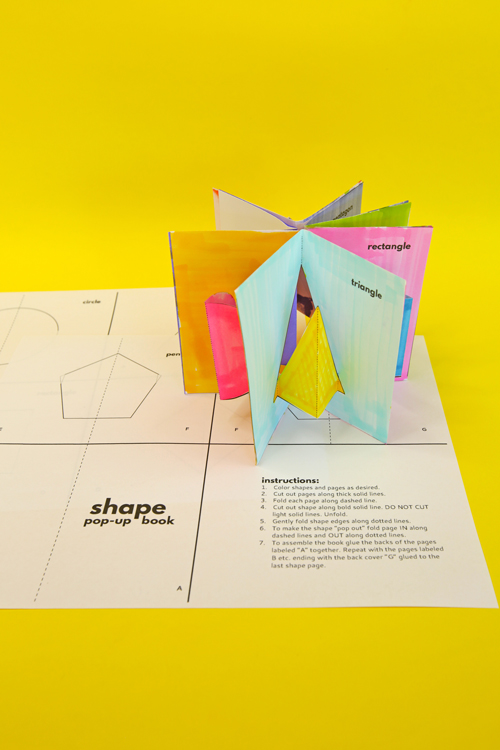
More
If you enjoyed this exploration of math through book making you also have to try making a 2-D Shape book!
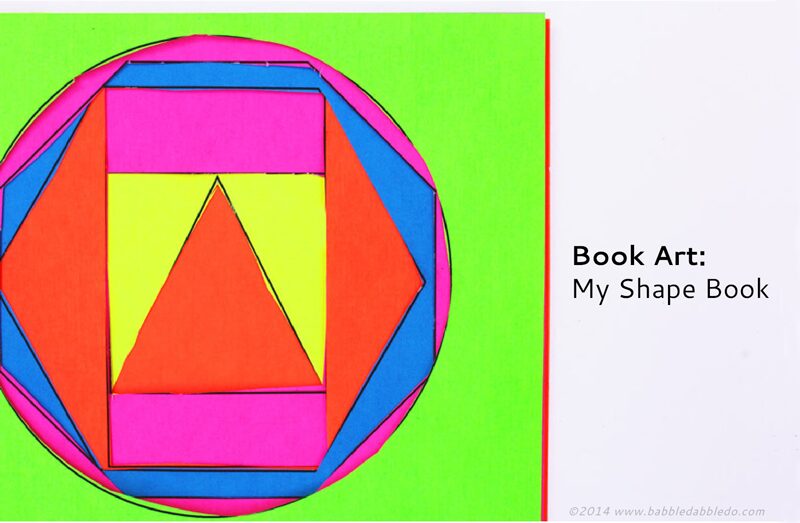
Are you passionate about raising creative kids?
Join thousands of parents and educators who want connect with kids and nurture their creative process through magical, easy projects you can do TOGETHER.
Subscribe to our email list to receive project ideas as well as offers for some our creative products.
If you want to read our privacy policy before subscribing, hop over here.
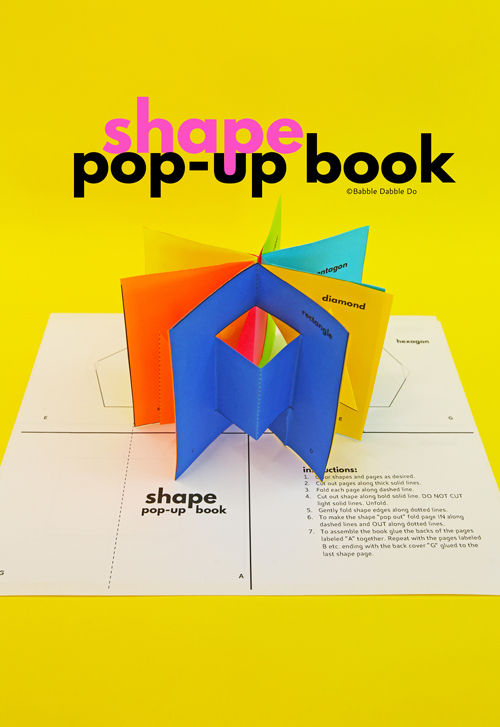

This is amazing! Thank you for sharing!
I am a high school Mathematics educator in South Africa. I teach Gr 7 – 12 (13 – 18 years of age).
I absolutely love Geometry!
Would love to see how you would make a foldable or book for 3 D shapes to teach Total Surface Area and Volume.
That is a great idea! Thank you for suggesting it!